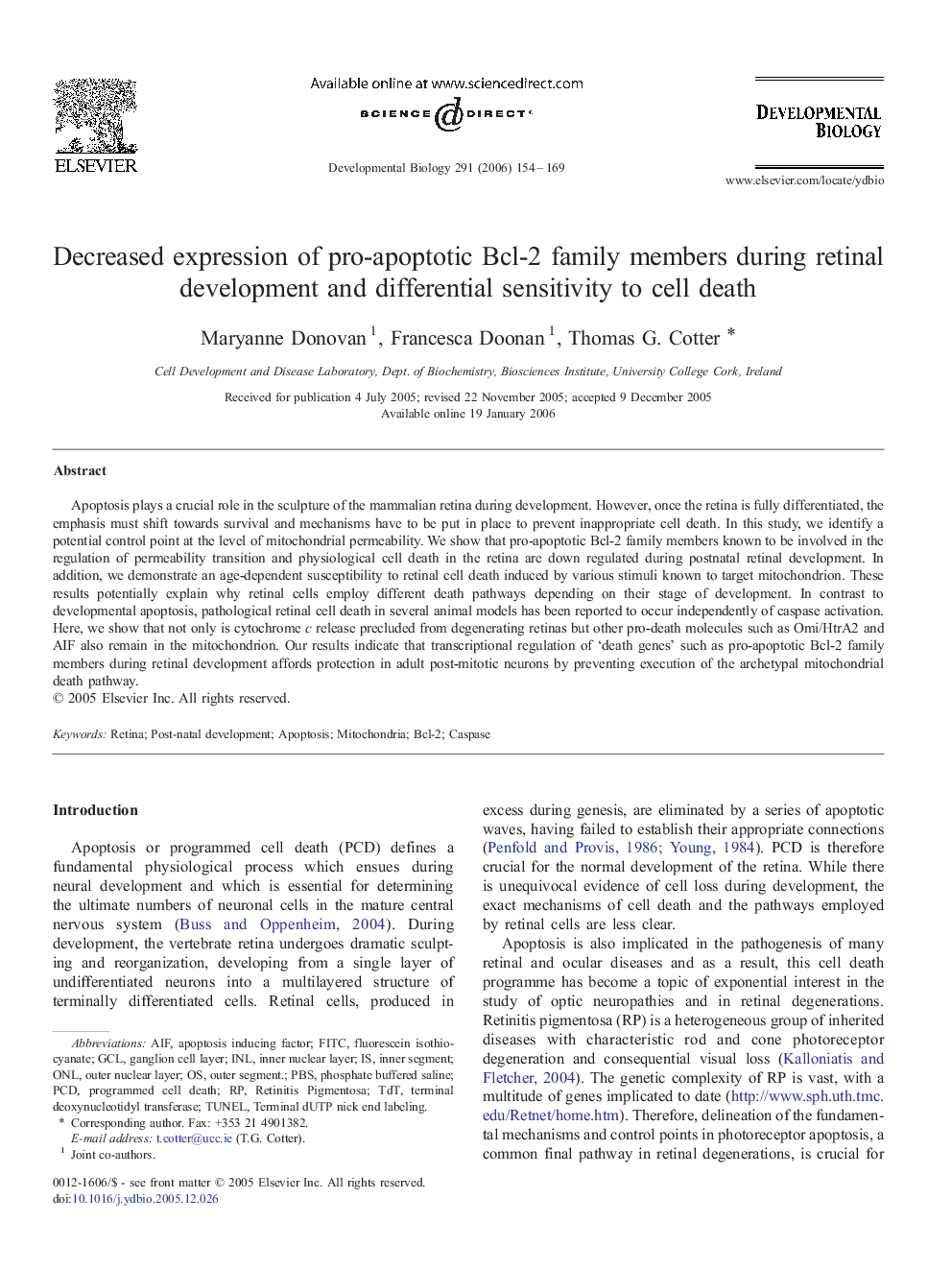| Article ID | Journal | Published Year | Pages | File Type |
|---|---|---|---|---|
| 2175815 | Developmental Biology | 2006 | 16 Pages |
Apoptosis plays a crucial role in the sculpture of the mammalian retina during development. However, once the retina is fully differentiated, the emphasis must shift towards survival and mechanisms have to be put in place to prevent inappropriate cell death. In this study, we identify a potential control point at the level of mitochondrial permeability. We show that pro-apoptotic Bcl-2 family members known to be involved in the regulation of permeability transition and physiological cell death in the retina are down regulated during postnatal retinal development. In addition, we demonstrate an age-dependent susceptibility to retinal cell death induced by various stimuli known to target mitochondrion. These results potentially explain why retinal cells employ different death pathways depending on their stage of development. In contrast to developmental apoptosis, pathological retinal cell death in several animal models has been reported to occur independently of caspase activation. Here, we show that not only is cytochrome c release precluded from degenerating retinas but other pro-death molecules such as Omi/HtrA2 and AIF also remain in the mitochondrion. Our results indicate that transcriptional regulation of ‘death genes’ such as pro-apoptotic Bcl-2 family members during retinal development affords protection in adult post-mitotic neurons by preventing execution of the archetypal mitochondrial death pathway.
